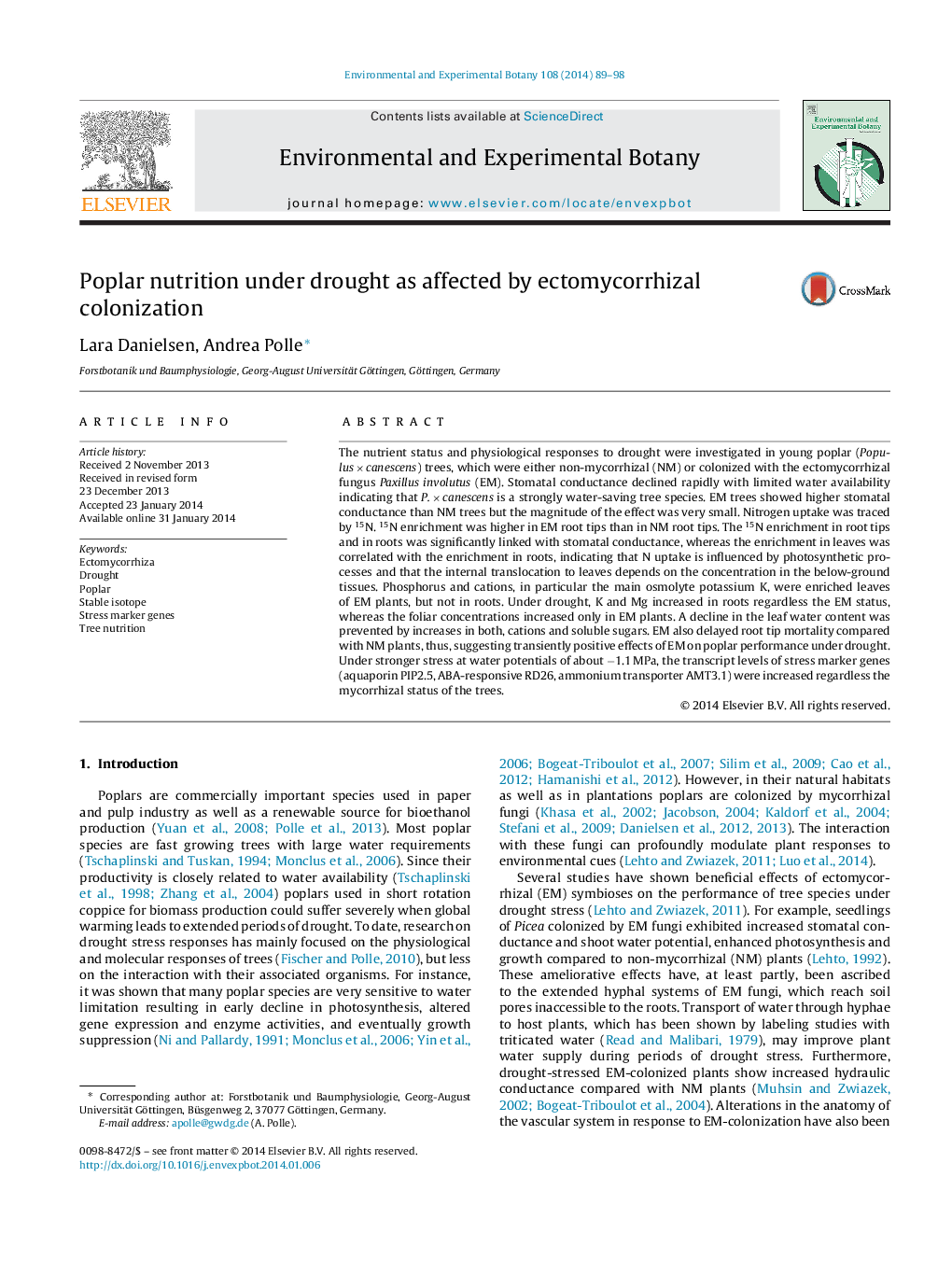| Article ID | Journal | Published Year | Pages | File Type |
|---|---|---|---|---|
| 4554369 | Environmental and Experimental Botany | 2014 | 10 Pages |
•Poplars can form ectomycorrhizas (EM) with the fungus Paxillus involutus.•EM increased cation and phosphorus but not nitrogen concentrations in leaves.•EM increased nitrogen uptake into root tips, but not the concentrations of any nutrient in roots.•Drought caused strong increases in K and Mg in roots regardless the EM status.•Drought caused moderate increases in K and Mg only in leaves of EM trees.
The nutrient status and physiological responses to drought were investigated in young poplar (Populus × canescens) trees, which were either non-mycorrhizal (NM) or colonized with the ectomycorrhizal fungus Paxillus involutus (EM). Stomatal conductance declined rapidly with limited water availability indicating that P. × canescens is a strongly water-saving tree species. EM trees showed higher stomatal conductance than NM trees but the magnitude of the effect was very small. Nitrogen uptake was traced by 15N. 15N enrichment was higher in EM root tips than in NM root tips. The 15N enrichment in root tips and in roots was significantly linked with stomatal conductance, whereas the enrichment in leaves was correlated with the enrichment in roots, indicating that N uptake is influenced by photosynthetic processes and that the internal translocation to leaves depends on the concentration in the below-ground tissues. Phosphorus and cations, in particular the main osmolyte potassium K, were enriched leaves of EM plants, but not in roots. Under drought, K and Mg increased in roots regardless the EM status, whereas the foliar concentrations increased only in EM plants. A decline in the leaf water content was prevented by increases in both, cations and soluble sugars. EM also delayed root tip mortality compared with NM plants, thus, suggesting transiently positive effects of EM on poplar performance under drought. Under stronger stress at water potentials of about −1.1 MPa, the transcript levels of stress marker genes (aquaporin PIP2.5, ABA-responsive RD26, ammonium transporter AMT3.1) were increased regardless the mycorrhizal status of the trees.
